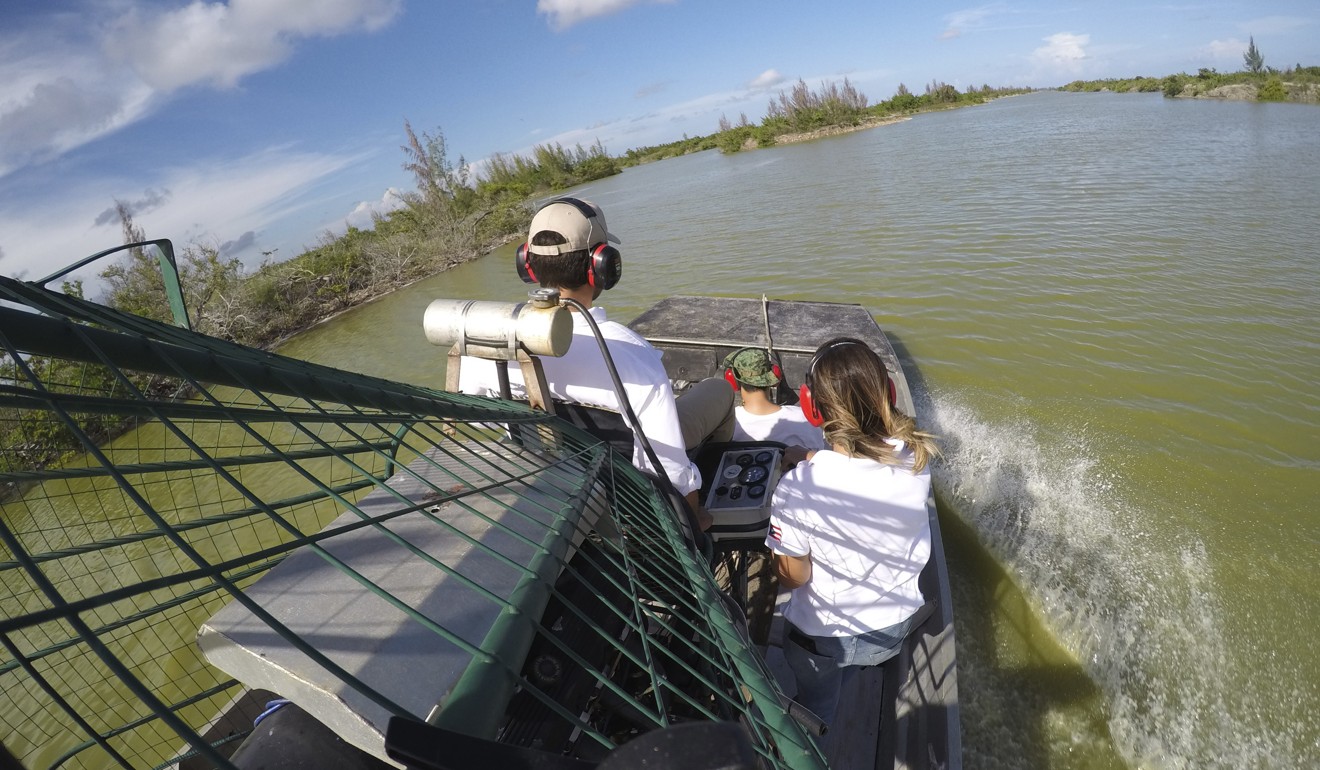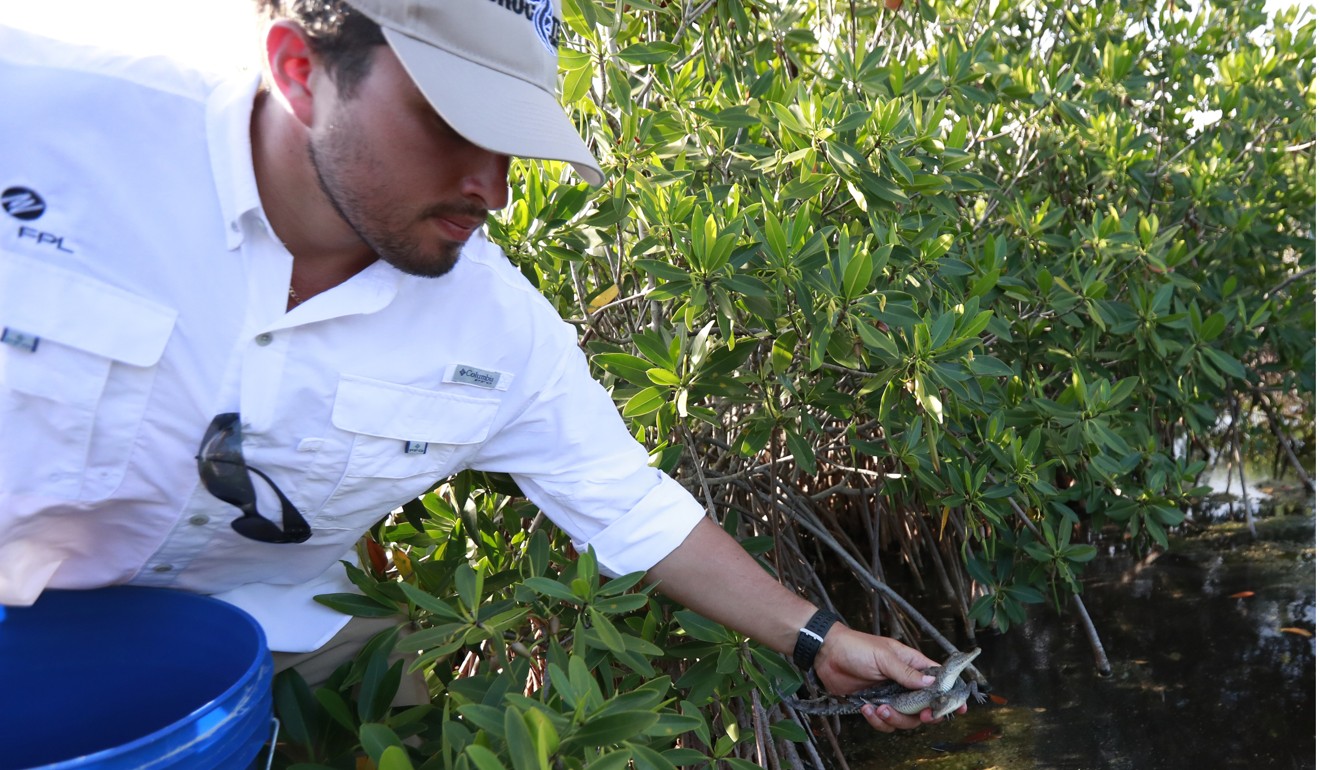
Once threatened American crocodiles are thriving outside Florida nuclear plant
- The cooling channels surrounding Turkey Point facility are home to hundreds of crocs, which were once virtually extinct
American crocodiles, once heading towards extinction, are thriving at an unusual spot – the canals surrounding a South Florida nuclear plant.
Last week, 73 crocodile hatchlings were rescued by a team of specialists at Florida Power & Light’s Turkey Point nuclear plant and dozens more are expected to emerge soon.

Turkey Point’s 270km (168 miles) of man-made canals serve as the home to several hundred crocodiles and are where a team of specialists working for FPL monitors and protects them from hunting.
From January to April, Michael Lloret, an FPL wildlife biologist and crocodile specialist, helps create nests and ponds on berms for crocodiles to nest. Once the hatchlings are reared and left by the mother, the team captures them. They are measured and tagged with microchips to observe their development. Lloret then relocates them to increase survival rates.
“We entice crocodiles to come in to the habitats FPL created,” Lloret said. “We clear greenery on the berms so that the crocodiles can nest … Turkey Point is important for crocodiles to continue.”

The canals are one of three major US habitats for crocodiles, where 25 per cent of the 2,000 American crocodiles live. The FPL team has been credited for moving the classification of crocodiles on the Endangered Species Act to “threatened” from “endangered” in 2007. The team has tagged 7,000 babies since it was established in 1978.
Temperature determines the crocodiles’ sex: the hotter it is the more likely males are hatched. Lloret said this year’s hatchlings are male-heavy due to last month being the hottest June on record.
Because hatchlings released are at the bottom of the food chain, only a small fraction survive to be adults. Lloret said they at least have a fighting chance at Turkey Point, away from humans who hunted them to near-extinction out of greed and fear even though attacks are rare.

Only one crocodile attack has ever been recorded in the US – a couple were both bitten while swimming in a South Florida canal in 2014, but both survived.
“American crocodiles have a bad reputation when they are just trying to survive,” Lloret said. “They are shy and want nothing to do with us. Humans are too big to be on their menu.”

